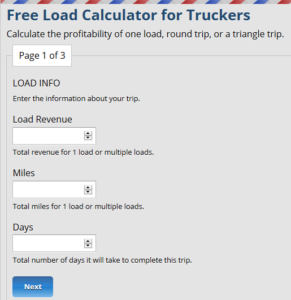By using nine good motoring habits, truckers can continue to ride the highways in a safe manner. After all, no one wants to add the information of a truck accident to their financial or DOT records, even if they have easy-to-use, online truck expense management software.
9 Safety Tips for Truck Drivers
1. Get enough rest. Plan your day with your hours of service in mind so you’ll be alert when it’s time to drive. Still, if you feel drowsy, pull over and take a nap. Don’t risk driving while sleepy.
2. Slow down in work zones. Lanes are often moved or redirected during construction; adjust your speed so you can follow the provided signage without endangering yourself, other drivers, or the workers.
3. Be aware of your blind spots. Small cars can be easily missed. Signal your intention to change lanes or turn well in advance, so that cars have enough opportunity to get out of your blind spot. You might also invest in extra side mirrors to improve visibility. More and more, we’re seeing videos made by truckers on the road of stupid and dangerous things that car drivers do without consideration for a truck. A dash cam that can show you your blind spots could pay for itself.
4. Maintain a safe distance from the cars in front of you. We know that it will take you much longer to stop than an average car. Do car drivers know it? Defensive driving is a critical skill – as is not succumbing to road rage. Keep it cool.
5. Regularly inspect your brakes. There isn’t always a convenient runaway truck ramp nearby to catch you if your brakes go bad.
6. Follow suggested speed limits. And when you’re in construction zones, remember that the speed may be reduced and the fines for speeding increased.
7. Avoid aggressive drivers. Now that all of us have phones in our trucks, when you see a car driver whose driving is dangerous, call for the highway patrol to see what they can do for help. Don’t get caught up in road rage scenarios; antagonizing aggressive drivers will only escalate the situation.
8. Always, always, always wear your seat belt. Come on, man, do we need to say that?
9. Avoid driving under the influence. It’s not just illegal drugs and alcohol. Beware of the effects of prescription and OTC drugs; many medications make you drowsy. And watch the Red Bull or other highly caffienated drinks. When the buzz wears off, you might be too exhausted to drive safely.
By making these suggestions habits, truckers can avoid getting personally acquainted with highway patrolman, accident lawyers, insurance auditors, and DOT representatives. Instead, these dedicated freight movers will enjoy the camaraderie of other truck drivers, rest stop acquaintances, and happy freight companies.
The 10th Trucking Safety Tip
Being a professional trucker can be a difficult and dangerous job. Regardless of how safety-conscious you are, other drivers on the highway can suddenly put you in a life-threatening situation. With that in mind, we’d like to recommend the 10th trucking safety tip:
- Never skip tips one through nine. Nothing is worth risking a life for, so take time to follow the 9 safety guidelines above. Trucking companies rely on their drivers to practice trucking safety procedures while on the road. Also, all of those other drivers on the road depending on your expertise as well. Know the safety guidelines and follow them, always.
Yeah, that’s meta, but it’s true. The above 10 tips will keep you alive if you’re faced with one of those unpredictable moments that can arise while you’re behind the wheel.
Of course, trucking safety requires a great amount of skill, but it also requires a lot of common sense and too much recordkeeping. To help you carry that responsibility, TruckingOffice PRO offers a trucking software package that will make the administrative part of your job much easier. Our program is designed to reduce paperwork and give you more time to build your business. Contact us at any time at TruckingOffice.com or sign up for your free trial.
Trucking Industry Statistics
Over the past two decades before 2015, truck accidents increased by 20%, and 1 truck driver out of 20 was involved in an accident every year. This led to the regulations about the electronic driver logbook requirements and changes in the hours of service. FMCSA estimates say that there will thousands of fewer accidents and hundreds of fewer injuries and deaths when truckers respect the HOS and use their ELDs.
The best way to avoid becoming part of these trucking industry statistics is to be alert, be aware, and be conservative. Drivers have their hands full handling the tons of equipment and cargo they move. By adopting these nine safety tips for truck drivers, they can avoid becoming the 1 in 20 drivers with an accident on his or her record.







I like that you mentioned how you should signal early so that you can give other vehicles enough time to get away from your blind spots. My uncle is interested in starting a moving business this summer and needs to learn how to drive a truck, but he wants to learn how to clearly convey his intentions to other drivers since he will be driving on busy roads. Maybe he should consider finding a truck driving school that will help him understand how to properly signal.
I like that you brought up the importance of being mindful of your blind spots since smaller cars may be difficult to see. I remember my cousin telling me that he would like to find a truck driving job this summer once he graduates from high school, but he needs to find a business that offers adequate training in order to ensure that he stays safe during harsh weather conditions. Hopefully, he can find a position that will suit his needs.
hiii
Nice blog keep write…for reader
Healthy Snacks for Truck Drivers
Looking for some information. I was recently in an accident involving a tractor/trailer on the highway. It was am rush hour and I was merging in a PU truck into a highway slow lane. (The last I heard is that truck drivers are held at a higher level of safety and are always taught to avoid an accident whenever possible.) I looked to my left and there was a truck approximately 2 car lengths back. I put on my signal and started to merge into his lane. All of a sudden I hear his horn blaring and as I’m 3/4 in the lane he speeds up to me and hit me starting at the rear break light and drives up the side of my truck forcing me out of the lane. His bumper tore a hole in my door and he came to a stop just past my front tire. State Patrol showed up but failed to issue a ticket now he is claiming I drove down the side of his truck with my pickup. I too am a C D L holder and this is not right. Does anyone have info on where I can find info on accidents, rules and regulations for Drivers? My searches have led me nowhere.
Maintaining preventative maintenance will not only save you money, but will also help you avoid an accident on the road. Awesome! I’m looking forward to reading more articles like this one.
Thanks
Yes, driver attention is certainly a guarantee of safety, but the trucking company, for example, must provide maintenance of vehicles, monitor the work of drivers and conduct briefings, recording it in the relevant lists. Such training can ensure a high level of safety.
Fantastic reminders for safe driving! These tips are invaluable for keeping ourselves and others safe on the road. Let’s all commit to practicing them every time we drive. Safety first!
Thank you for the driving safety tips! Remembering these recommendations can make a difference on the roads. Prioritize safety!